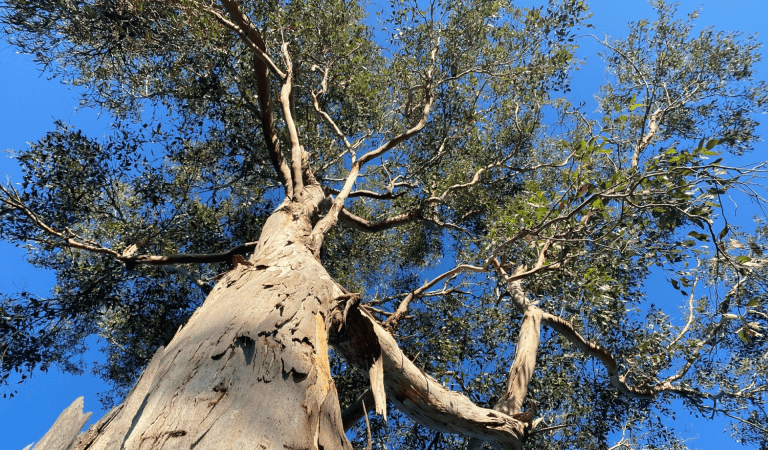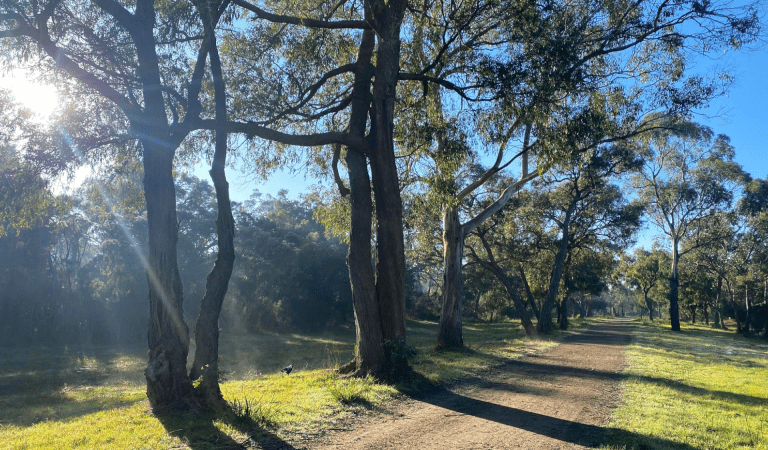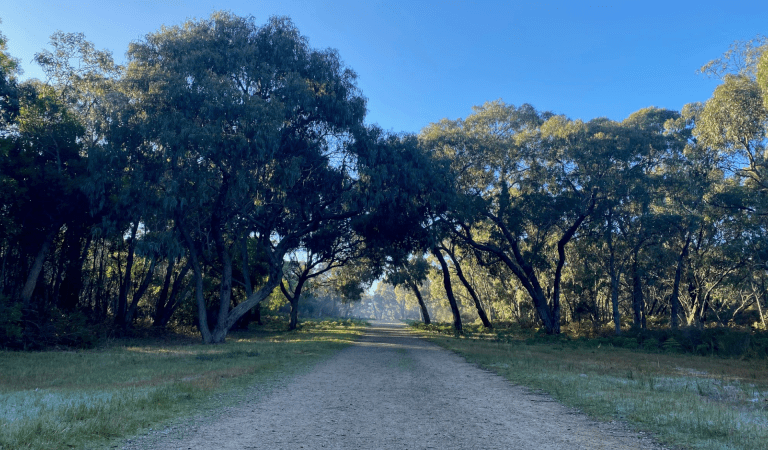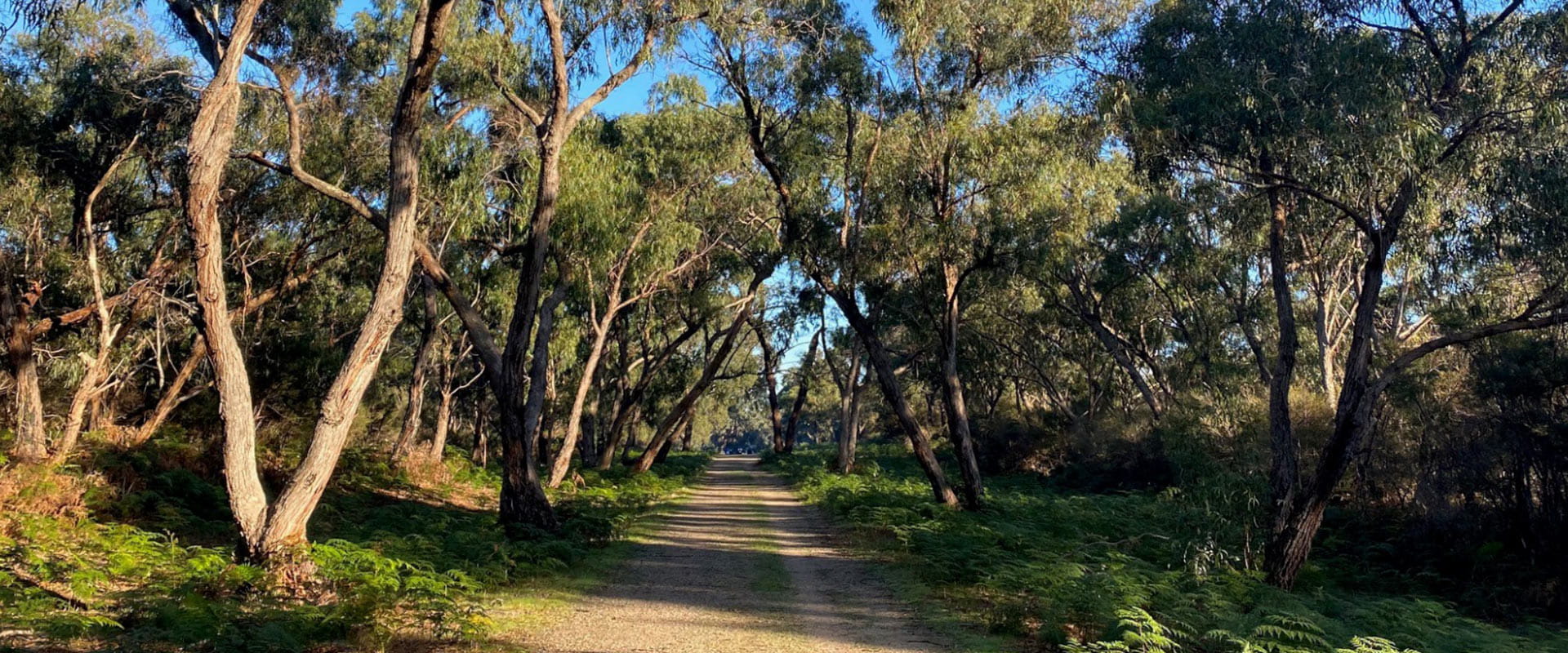Explore
Langwarrin Flora and Fauna Reserve
Explore a preserved pocket of the indigenous flora and wilderness that once extended across this area of the Mornington Peninsula. The network of trails that wind through Langwarrin Flora and Fauna Reserve offer a fascinating insight into the different vegetation communities, fauna habitats and historical sites. The mixed-use tracks are popular with walkers, joggers and cyclists.
This reserve and surrounding lands were originally occupied by the Bunurong people who travelled across the peninsula in search of seasonally available foods, and the remnants of a lithic (stone) scatter in the reserve is testament to the long history of use and pre-European occupation.
First established as the Langwarrin Military reserve in 1886, this park was used for various activities by the Victorian colonial defence forces. During World War 1, German prisoners of war were detained at the reserve and a hospital was set up for the treatment of soldiers returning from France and Egypt. The Langwarrin Historical Trail provides an insight into the history and remains of this military use, including the stone-capped reservoir and rifle butts.
The vegetation of the reserve is of state significance, with 300 indigenous flora species recorded, equating to 45 percent of the species indigenous to the Mornington Peninsula. Plant communities here, such as the Silverleaf Stringybark open woodland, were cleared from surrounding areas to accommodate Melbourne’s expanding eastern suburbs.
The reserve also provides important habitat for native fauna, particularly small mammals, including the echidna and swamp wallaby. A total of 98 bird species, including the rare Southern Emu-wren, Glossy black cockatoo and Powerful owl have been recorded here, making it an excellent reserve for birdwatching.
Things To Do
This area is well known for its wildlife. Keep an eye out for:

Birdwatching

Cycling

Horse riding
Langwarrin Flora and Fauna Reserve
This area is well known for its wildlife. Keep an eye out for:
Tours and adventure experiences in parks
One of the best ways you can get into nature is with a Licensed Tour Operator.
There are more than 400 Licensed Tour Operators across Victoria who are ready and waiting to help you experience and connect with Victoria’s spectacular parks and waterways.
Discover more than 60 different types of nature-based experiences including hiking, mountain biking, boating, four-wheel driving, indigenous culture tours, birdwatching, surfing, diving and so much more.
Licensed Tour Operators know all the best places to go and will plan and prepare your visit to ensure you are safe and can enjoy your nature-based adventure to the fullest.
How to get there
Langwarrin Flora and Fauna Reserve
When you're there
Download the Langwarrin Flora and Fauna Reserve visitor guide for more information about the park and a map.
Langwarrin Historical Trail – 3km, 1 hour return – Visit the reserve’s military sites and follow information signs along the Langwarrin Historical Trail. While the military buildings are gone, evidence of this history remains, including the stone-capped reservoir, rifle butts and the fountain of a hospital site.
Emu-wren Track – 600m, 10 min – Tread softly as you explore the native flora of the Emu-wren Track, and you may be rewarded with a sighting of the rare Southern Emu-wren amongst the bushland.
Military Track – 1km, 15min – For a taste of the native trees and scrub that once covered this landscape, venture down the flat, wide Military Track and wander beneath tall gum trees before moving into dense bushland.
Need to know
Langwarrin Flora and Fauna Reserve
Accessibility
Visiting a park can be more of a challenge for people with disabilities, however in Victoria there are a wide range of facilities to help people of all abilities enjoy our wonderful parks around the state.
Assistance dogs are welcome in Parks Victoria parks and reserves. Entry requirements apply for parks and reserves that are usually dog prohibited, such as national parks.
There are no vehicle off-loading areas available in the park. Wheelchair-friendly access is available along Centre Break and Reservoir Track.
Visitor tips
- A map and park information can be found at the main entrance to the reserve, along McClelland Drive.
- In keeping with the primary objective of protecting the reserve's conservation values, public facilities such as toilets, barbecues and picnic tables are not provided.
- Horse riding is permitted on the designated trail beside Robinsons and Warrandyte roads only.


